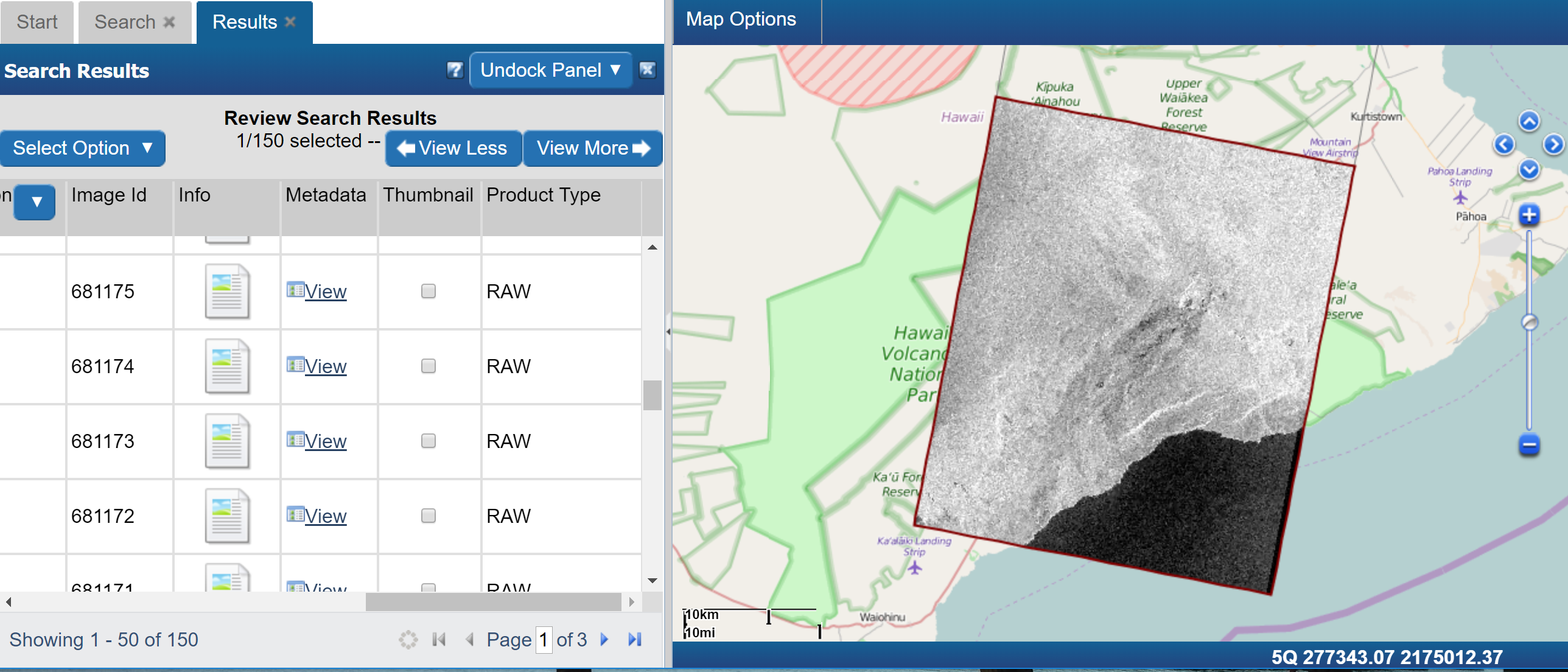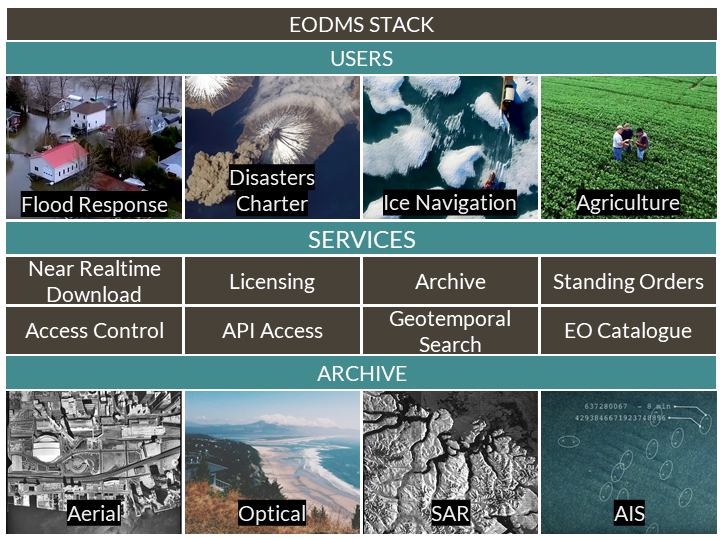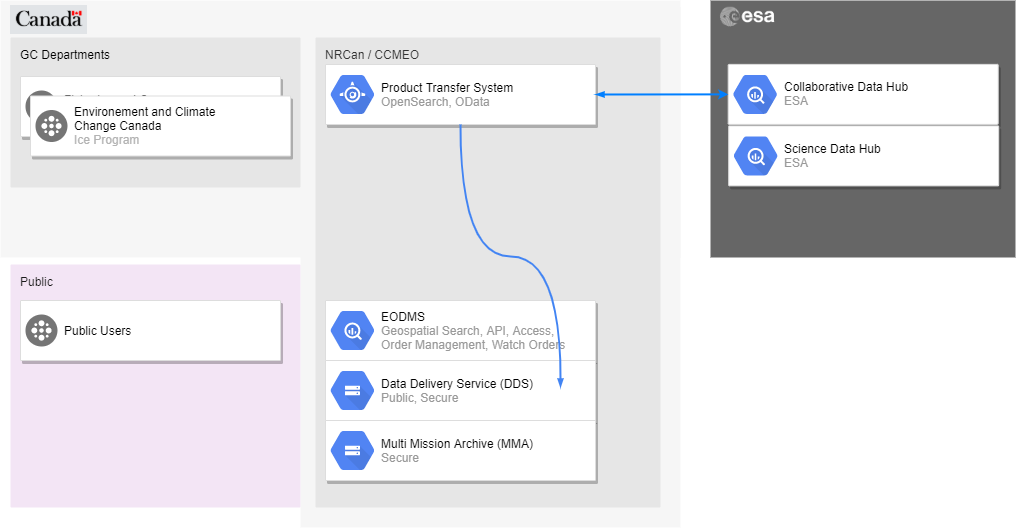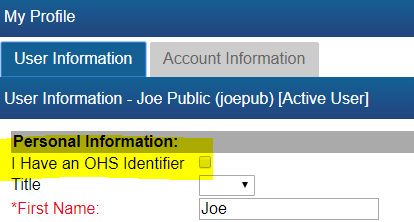Important: The GCConnex decommission will not affect GCCollab or GCWiki. Thank you and happy collaborating!
Difference between revisions of "Earth Observation Data Management System (EODMS)"
| Line 4: | Line 4: | ||
The Earth Observation Data Management System (EODMS) is a geospatial platform provided by Natural Resources Canada (NRCan) open to the general public to discover and download authoritative Canadian Earth Observation (EO) raster data. Check out our [[EODMS How-To Guide]] and our [https://prezi.com/p/1zp4tsgyn7uz/ Prezi]. The site is located at https://www.eodms-sgdot.nrcan-rncan.gc.ca/index_en.jsp. | The Earth Observation Data Management System (EODMS) is a geospatial platform provided by Natural Resources Canada (NRCan) open to the general public to discover and download authoritative Canadian Earth Observation (EO) raster data. Check out our [[EODMS How-To Guide]] and our [https://prezi.com/p/1zp4tsgyn7uz/ Prezi]. The site is located at https://www.eodms-sgdot.nrcan-rncan.gc.ca/index_en.jsp. | ||
[[File: EODMS.png | none | thumb | 600x600px | | [[File: EODMS.png | none | thumb | 600x600px | | ||
| − | Figure: The new EODMS allows users to discover, preview, and order a variety of Earth Observation data from many satellites. | + | Figure: The new EODMS allows users to discover, preview, and order a variety of Earth Observation (EO) data from many satellites. |
]] | ]] | ||
== History == | == History == | ||
| − | With the second largest landmass on earth and the longest coastline in the world, Canada relies on satellite technology to monitor its land and borders. Providing access to this technology is a core mandate of NRCan's Canada Centre for Mapping and Earth Observation (CCMEO). Through partnerships across government, strong links to academia and the private sector, including international collaborations, CCMEO ensures that satellite data is available to serve the needs of the | + | With the second largest landmass on earth and the longest coastline in the world, Canada relies on satellite technology to monitor its land and borders. Providing access to this technology is a core mandate of NRCan's Canada Centre for Mapping and Earth Observation (CCMEO). Through partnerships across government, strong links to academia and the private sector, including international collaborations, CCMEO ensures that satellite data is available to serve the needs of the GC and all Canadians. Since 1971, CCMEO has accumulated an EO data archive in excess of 2 PB. This data originated from many satellites and airborne sensors. The 2012 Canadian Federal Budget included NRCan’s revitalization plan which sought to improve Canada’s EO satellite capacity and access to this data. This plan was realised through the purchase and installation of four (4) new satellite antennas as well as the brand new EODMS which replaced several legacy systems. |
== Services == | == Services == | ||
| − | + | NRCan continues its role as [[Data_Stewardship|Data Steward]] for by providing several EO data services GC priorities on the economic development of Canada's natural resources, the North, safety, security, sovereignty, and environmental monitoring. | |
[[File: Eodms-stack.png | none | thumb | 600x600px | | [[File: Eodms-stack.png | none | thumb | 600x600px | | ||
Revision as of 14:42, 28 August 2021
What is EODMS?
The Earth Observation Data Management System (EODMS) is a geospatial platform provided by Natural Resources Canada (NRCan) open to the general public to discover and download authoritative Canadian Earth Observation (EO) raster data. Check out our EODMS How-To Guide and our Prezi. The site is located at https://www.eodms-sgdot.nrcan-rncan.gc.ca/index_en.jsp.
History
With the second largest landmass on earth and the longest coastline in the world, Canada relies on satellite technology to monitor its land and borders. Providing access to this technology is a core mandate of NRCan's Canada Centre for Mapping and Earth Observation (CCMEO). Through partnerships across government, strong links to academia and the private sector, including international collaborations, CCMEO ensures that satellite data is available to serve the needs of the GC and all Canadians. Since 1971, CCMEO has accumulated an EO data archive in excess of 2 PB. This data originated from many satellites and airborne sensors. The 2012 Canadian Federal Budget included NRCan’s revitalization plan which sought to improve Canada’s EO satellite capacity and access to this data. This plan was realised through the purchase and installation of four (4) new satellite antennas as well as the brand new EODMS which replaced several legacy systems.
Services
NRCan continues its role as Data Steward for by providing several EO data services GC priorities on the economic development of Canada's natural resources, the North, safety, security, sovereignty, and environmental monitoring.
EODMS
Data services delivered by EODMS include:
GENERAL PUBLIC SEARCH AND DOWNLOAD
- RAW RADARSAT-1, RAW RADARSAT-2. The discovery and download of RADARSAT-1 Open Data Products (File:README-LISEZMOI.txt) as well as Thematic Data Sets,
- RADARSAT-1 Level 1 COGs on AWS: https://registry.opendata.aws/radarsat-1/
- National Air Photo Library (NAPL)
- SGB Canada Lands Aerial Photos
- NOTE: The Ring of Fire region of Ontario and the Tuktoyuktuk NWT regions are free for digital download.
- RCM. Registered public users will be able to download GRD and GCD products which are limited to the following regions and resolutions only: Canada Land - coarser than or equal to 16 m. and World Maritime - coarser than or equal to 100 m. Products over World Land excluding Canada will not be available. The scene has to be completely within Canadian Land. This includes inland water (e.g. Great Lakes in Canada), but excludes and must not contain / overlap at all with coastline (inc. Arctic) waters and St-Lawrence river. Checkout our Canada Landmass Map Boundary Google Map
GC ONLY SEARCH AND DOWNLOAD
- NMSO CSI: COSMO-SKYMED, Disaster Monitoring Constellation, Gaofen-1, GeoEye-1, IKONOS, Indian Remote Sensing, NOAA, PlanetScope, QuickBird-2, RADARSAT-2 Products, RapidEye, SPOT, TERRASAR-X, WorldView-1, WorldView-2, WorldView-3, WorldView-4
- HTTPS/FTP download-only of *all ordered NMSO CSI* that are not yet map-searchable: Deimos-2, Flock1-SSO, GF-1, KOMPSAT-3, TanDEM-X, Terra, Terra/Aqua For these missions, we invite users to check out this article Text-Searching EODMS Server with Filezilla
- RADARSAT 2 (R2) Products.
MULTI-MISSION ARCHIVE (MMA)
The storage backbone of EODMS is CCMEO’s Multi-Mission Archive (MMA) which is the Canadian authorized repository of over 3PB of RADARSAT-1, RADARSAT-2, RCM, NAPL and NMSO commercial imagery. The capacity of the archive is currently 5 PB and growing. The data is stored robustly using redundant storage and securely to comply with the Remote Sensing Space Systems Act
COPERNICUS CANADIAN RELAY
In 2015, Canada joined the Sentinel collaborative ground segment to facilitate Near-realtime (NRT) access to Sentinel satellite data. CCMEO retrieves data from the Copernicus Collaborative Hub over a high speed science network and stages it on a Canadian relay site with reliable download speeds for Canadian users.
CCMEO provides this service using a Product Transfer System (PTS) to pull SENTINEL products from the NRT Collaborative hubs and then stages the data on EODMS with a life of 14 days with dependable download speeds. While this limited access has operationalized the use of SENTINEL data to key GC programs, open NRT access to SENTINEL-1,2,3,5p is being considered. Please contact us for more info: mailto:nrcan.eodms-sgdot.rncan@canada.ca
RCM, RADARSAT-2, NMSO
RADARSAT CONSTELLATION MISSION (RCM)
For FREE GC/VETTED ACCESS to RCM:
- Create an EODMS account
- Check the "I have an OHS Identifier" checkbox in your profile.
- Submit your application:
- For NON-GOVERNMENT users, please submit an application to How to become a user.
- For GOVERNMENT of CANADA users submit your EODMS username to the Canadian Space Agency in an email to asc.r-sat.csa@canada.ca
- Finally, you will receive an email when your EODMS account is ready.
NOTE: Ensure the ORGANIZATION NAME you specify on your VETTING APPLICATION exactly matches the organization name entered in your EODMS ACCOUNT registration
RADARSAT-2
For free GC access to RADARSAT-2:
- Create an EODMS account
- Provide you username to the Canadian Space Agency at asc.r-sat.csa@canada.ca
CSA R-2 Project Programs
Did you know that CSA coordinates several [RADARSAT-2 special access programs] to encourage the use of space data. Also available is access for the The International Charter: Space and Major Disasters. Find out more here.
NMSO Commercial Satellite Imagery (Free)
The NMSO-CSI is a GC initiative to cut down on the procurement of duplicate commercial satellite imagery across the public service. All departments with commercial satellite imagery needs should route all procurement through NMSO E60SQ-120001 after which imagery will be loaded on to EODMS to be re-used by the whole of government. All GC employees can have free access to NMSO Commercial Satellite Imagery (CSI) already purchased by the GC. Simply create an EODMS account and then send a request to your Department NMSO point of contact (PoC) for your added privileges using the form on our GCPedia (Government-only) page, EODMS Account Approvals for Government and Special Access
Current NMSO CSI Offerers
CURRENT NMSO CSI AGREEMENT
https://buyandsell.gc.ca/cds/public/2019/01/25/2a5fb27b2fd266c9d0a0a4f56808662d/rfso_refresh_-_en.pdf. See See Annex D, Section 8 for CALL UP PROCEDURE
License Details
- APPENDIX E TO ANNEX A - Designated Government FTP/SFTP directory path to deliver Product Delivery Package
The Offeror must use the Designated Government FTP directory structure to deliver the Product Delivery Package. From the Offeror FTP/SFTP account, the delivery directory path is defined as follow: /<dept>/<satellite>/<sensor>, where <dept> : correspond to the government department name of the Identified User (available on the Call-Up) as described in Table E.1, <satellite> is satellite name (to be defined at issuance of NMSO), <sensor> is sensor name (to be defined at issuance of NMSO),
| License Level | License Level Description |
|---|---|
| Level A | The project level, at which a License Class allows Identified Users to only share the data with the designated sharing entities identified in Table A, “License Class Designations”, more specifically “Included Entities” on a project basis; and |
| Level B | The broad level, at which a License Class allows Identified Users to share the data with all users of the designated sharing entities identified in Table A “License Class Designations”, more specifically “Included Entities”. |
| License Class | Included Entities |
| Base/Class 0 | Canadian Government Departments, Agencies, and Crown Corporations |
| Class 1 (A, B) | Base + Canadian Academic Research community affiliated with a recognized University or College |
| Class 2 (A, B) | Base + Provincial and Territorial Governments in Canada |
| Class 3 (A, B) | Class 2 + Local (Municipal, Aboriginal People - First Nations, Inuit, Metis or Tribal Councils) Governments in Canada. Local Governments would include two cities with over 500,000 in population and up to 20 municipalities with less than 500,000 in population |
| Class 4 (A, B) | Base + Local Governments (Municipal, Aboriginal People - First Nations, Inuit, Metis or Tribal Councils) in Canada. Local Governments would include two cities with over 500,000 in population and up to 20 municipalities with less than 500,000 in population |
| Class 5 (A, B) | Civilian Departments of the Government of Canada and their international counterparts as per their mandates. (Example: Canadian Ice Service and US National Ice Center and International Ice Patrol under the North American Ice Service [NAIS]) |
| Class 6 (A, B) | Base + USA Government Agencies (Military and Civilian) e.g. US Department of Defense |
| Class 7 (A, B) | Base + Military Partners (USA, UK, AUS, New Zealand) |
| Class 8 (A, B) | Base + Military Partners (USA, UK, AUS, New Zealand) + 28 NATO Member Countries (See http://www.nato.int/pfp/eapc-cnt.htm.) |
| Class 9 (A, B) | Base + Military Partners (USA, UK, AUS, New Zealand) + 28 NATO Member Countries (See http://www.nato.int/pfp/eapc-cnt.htm .) + any of 21 NATO Partners for Peace
(See http://www.nato.int/pfp/sig-cntr.htm .) |
| Class 10 | Note: Class 10 is replaced by Class 12 below |
| Class 11 | Base + public at large (i.e. Public Good License Class) |
| Class 12 (A, B) | Base + Military and Defence related organizations of foreign countries with which Canada is involved in international duties (example: United Arab Emirates forces in Afghanistan). The list of foreign countries will vary depending on the operations involved. The list of countries will be provided to the Offeror for country list approval prior to sharing. An addendum to the license shall list the countries approved for sharing. |
Qu'est-ce que SGDOT?
Le Système de données d'observation de la Terre (SGDOT) est une plate-forme géospatiale entièrement intégrée fournie au grand public par RNCan / RNCan pour la découverte et l'accès à des données faisant autorité en observation de la Terre. Consultez également le EODMS How-To Guide. Le site est situé à l'adresse https://www.eodms-sgdot.nrcan-rncan.gc.ca/index_fr.jsp.
Histoire
Avec la deuxième masse terrestre la plus importante au monde et le plus long littoral du monde, le Canada s'appuie sur la technologie par satellite pour surveiller ses terres et ses frontières. Fournir l'accès à cette technologie est l'un des principaux mandats du Centre canadien de cartographie et d’observation de la Terre (CCCOT) de RNCan. Le CCCOT est le centre d’expertise du gouvernement du Canada en matière de télédétection et de géodésie. Grâce à des partenariats avec des intervenants gouvernementaux, des liens étroits avec les universités et le secteur privé, y compris des collaborations internationales, le CCMEO veille à ce que les données satellitaires soient disponibles pour répondre aux besoins du gouvernement canadien et des Canadiens. Depuis 1971, CCCOT a accumulé plus de 1 PB d'archives contenant des données d'observation de la Terre. Ces données proviennent de divers satellites et capteurs aériens. Le budget fédéral canadien de 2012 incluait le plan de revitalisation de RNCan qui visait à maintenir et à améliorer la capacité de satellites de Terre d’OE du Canada et l’accès à ces données. Ce plan a été réalisé grâce à l’achat et à l’installation de quatre (4) nouvelles antennes et du système EODMS, qui a mis hors service plusieurs systèmes existants.
Services
Aujourd’hui, le CCMEO fournit plusieurs services de données d’OT pour appuyer les priorités du gouvernement du Canada en matière de développement économique des ressources naturelles, du Nord, de sécurité, de sûreté, de souveraineté et de surveillance de l’environnement.
SGDOT
RECHERCHE ET TÉLÉCHARGEMENT PUBLIC GÉNÉRAL
- RAW RADARSAT-1, RAW RADARSAT-2. La découverte et le téléchargement des produits de données ouvertes RADARSAT-1 (File:README-LISEZMOI.txt) ainsi que des ensembles de données thématiques,
- COG RADARSAT-1 de niveau 1 sur AWS : https://registry.opendata.aws/radarsat-1/
- National Air Photo Library (PNA)
- Arpenteur général photos aériennes (SGB)
- MRC. Les utilisateurs publics enregistrés pourront télécharger les produits GRD et GCD qui sont limités aux régions et résolutions suivantes uniquement : Terre du Canada - plus grossier ou égal à 16 mètres. et World Maritime - plus grossier ou égal à 100 m. Les produits sur les terres du monde à l'exclusion du Canada ne seront pas disponibles. La scène doit être entièrement en terre canadienne. Cela inclut les eaux intérieures (par exemple, les Grands Lacs au Canada), mais exclut et ne doit pas contenir / chevaucher du tout les eaux côtières (y compris l'Arctique) et le fleuve Saint-Laurent. Consultez notre carte Google des limites de la masse continentale du Canada
GC SEULEMENT RECHERCHE ET TÉLÉCHARGEMENT
- https://buyandsell.gc.ca/procurement-data/search/site/commercial%2520satellite%2520imagery NMSO CSI]: COSMO -SKYMED, Disaster Monitoring Constellation, Gaofen-1, GeoEye-1, IKONOS, Indian Remote Sensing, NOAA, PlanetScope, QuickBird-2, RADARSAT-2 Products, RapidEye, SPOT, TERRASAR-X, WorldView-1, WorldView-2, WorldView-3, WorldView-4
- Téléchargement HTTPS/FTP uniquement de *toutes les commandes NMSO CSI* qui ne sont pas encore consultables sur carte : Deimos-2, Flock1-SSO, GF-1, KOMPSAT-3, TanDEM-X, Terra, Terra/Aqua Pour ces missions, nous invitons les utilisateurs à consulter cet article [https://wiki.gccollab.ca/EODMS_How-To_Guide#.28GC_only.29_The_list_of_satellites_under_.3CSelect_Data.3E_is_missing_a_lot_of_NMSO_satellites._How_can_I_find_this_data.3F Ezilla Text-Searching.3F
- Produits RADARSAT 2 (R2).
ARCHIVES MULTI-MISSIONS (AMM)
L’architecture de stockage d’EODMS est l’archive multi-missions (MMA) du CCMEO, qui est le référentiel autorisé de plus de 1 PB d’images RADARSAT-1, RADARSAT-2, MCR, PNL et NMSO. La capacité de l'archive est actuellement de 4 PB et augmentera de 1 PB chaque année. Les données sont stockées de manière robuste en utilisant un stockage redondant et en toute sécurité pour se conformer aux lois RSSSA sur les contrôles d'accès et la diffusion.
RELAIS CANADIEN COPERNICUS
En 2015, Canada s'est joint au segment sol collaboratif Sentinel pour faciliter l'accès en temps quasi réel (NRT) aux données satellitaires Sentinel. Le CCMEO récupère les données du Copernicus Collaborative Hub sur un réseau scientifique haute vitesse et les met en scène sur un site relais canadien avec des vitesses de téléchargement fiables pour les utilisateurs canadiens.
Le CCMEO réalise ce service en utilisant un système de transfert de produit (PTS) léger pour extraire les produits SENTINEL-1 des pôles de collaboration via le réseau de recherche CANARIE auprès de ses homologues (par exemple, GEANT) dans l’UE. Il organise ensuite les données sur le serveur de téléchargement EODMS avec une durée de vie de 14 jours avec des vitesses de téléchargement fiables pour ses utilisateurs.
Bien que cet accès limité ait rendu opérationnelle l'utilisation des données SENTINEL pour les programmes clés du GC, une large utilisation de SENTINEL-1,2,3,5p est à l'étude. Veuillez nous contacter pour plus d'informations: mailto:nrcan.eodms-sgdot.rncan@canada.ca
Accès spécial (OCPN, RADARSAT)
MISSION DE CONSTELLATION RADARSAT (MCR)
Pour un accès gratuit GC / VETTED à MCR:
- Créez un compte EODMS
- Cochez la case «I Have an OHS Identifier» dans votre profil.
- Soumettez votre candidature:
- Pour les utilisateurs NON gouvernementaux, veuillez soumettre une demande à Pour devenir utilisateur approuvé.
- Pour les utilisateurs du GOUVERNEMENT DU CANADA, soumettez votre nom d'utilisateur EODMS à l'Agence spatiale canadienne par courriel à [mailto: asc.r-sat.csa@canada.ca asc.r-sat.csa@canada.ca]
- Enfin, vous recevrez un e-mail lorsque votre compte EODMS sera prêt.
REMARQUE: assurez-vous que le NOM DE L'ORGANISATION que vous spécifiez sur votre DEMANDE DE VETTING correspond exactement au nom de l'organisation entré dans votre enregistrement de COMPTE EODMS
RADARSAT-2
Pour un accès GC gratuit à R-2:
- Créez un compte SGDOT
- Donnez votre nom d'utilisateur à l'Agence spatiale canadienne à asc.r-sat.csa@canada.ca
Programmes du projet ASC R-2
Saviez-vous que la ASC coordonne plusieurs programmes d'accès spécial RADARSAT-2 pour encourager l'utilisation des données spatiales, y Charte internationale « Espace et catastrophes majeures ». Pour en savoir plus ici.
OCPN
L’OCPU-ISC est l’initiative du gouvernement du Canada visant à réduire les achats d’imagerie satellitaire commerciale «en double» dans l’ensemble de la fonction publique. Tous les départements ayant des besoins en imagerie satellitaire commerciale devraient viser à acheminer tous leurs achats via N60OQ-120001, après quoi des images seront chargés sur le SGEDD pour être réutilisés (c'est-à-dire découverts et téléchargés) par l'ensemble du gouvernement. Tous les employés du gouvernement du Canada (GC) peuvent avoir un accès gratuit aux images satellitaires commerciales (ISC) de l'OCPN déjà achetées par le GC. Créez simplement un compte SGDOT, puis envoyez une demande à votre point de contact OCPN pour votre privilège supplémentaires en utilisant le formulaire sur notre page GCPedia (gouvernement uniquement), à l'adresse http://www.gcpedia.gc.ca/wiki/Earth_Observation_Data_Management_System_(EODMS)#Account_Approvals_for_Government_and_Special_Access Approbation de compte EODMS pour le gouvernement et l'accès spécial]
offrants actuels de l'OCPN de l'OCPN
Accord actuel de l'OCPN OCPN
CLASSES DE LICENCE
CHEMIN DE RÉPERTOIRE FTP/SFTP GOUVERNEMENTAL DÉSIGNÉ SERVANT À LA LIVRAISON D’ENSEMBLES DE LIVRAISON DE PRODUITS
Les offrants doivent utiliser le répertoires FTP gouvernementaux désignés pour effectuer la livraison d’ensembles de livraison de produits. À partir du compte FTP/SFTP de l’offrant, le chemin du répertoire de livraison est défini comme suit :///, où <dept> correspond au nom du ministère du gouvernement de l’utilisateur désigné (indiqué sur la commande subséquente) comme décrit dans le tableau E.1, <satellite> est le nom du satellite (à définir au moment de l’émission de l’OC), <sensor> est le nom du capteur (à définir au moment de l’émission de l’OC), Niveau A Le niveau du projet, auquel une classe de licence permet aux utilisateurs indiqués de ne partager les données qu’avec les entités de partage désignées figurant dans le tableau A, « Désignations des classes de licences », plus précisément « Entités incluses » dans le cadre d’un projet; et
Niveau B. Le niveau général auquel une classe de licence permet aux utilisateurs indiqués de partager les données avec tous les utilisateurs des entités de partage désignées figurant dans le tableau A « Désignations des classes de licences », plus précisément « Entités incluses ».
Tableau A. Désignations des classes de licence
| Classe de licence | Entités incluses |
| Classe de base/classe 0 | Ministères, organismes et sociétés d’État du gouvernement du Canada |
| Classe 1 (A, B) | Base ou classe 0 + institutions canadiennes de recherche affiliées à une université ou un collège reconnu |
| Classe 2 (A, B) | Base ou classe 0 + gouvernements provinciaux et territoriaux du Canada |
| Classe 3 (A, B) | Classe 2 + gouvernements locaux au Canada (municipaux, peuples autochtones – Premières nations, Inuit, Métis ou conseils tribaux). Gouvernement local s’entend de deux villes d’une population totale de plus de 500 000 personnes, et jusqu’à 20 municipalités d’une population totale de moins de 500 000 personnes. |
| Classe 4 (A, B) | Base ou classe 0 + gouvernements locaux au Canada (municipaux, peuples autochtones – Premières nations, Inuit, Métis ou conseils tribaux). Gouvernement local s’entend de deux villes d’une population totale de plus de 500 000 personnes, et jusqu’à 20 municipalités d’une population totale de moins de 500 000 personnes. |
| Classe 5 (A, B) | Ministères civils du gouvernement du Canada et leurs contreparties internationales, selon leur mandat. (Exemple : le Service canadien des glaces, l’US National Ice Center et l’International Ice Patrol dans le cadre du North American Ice Service [NAIS]). |
| Classe 6 (A, B) | Base ou classe 0 + organismes gouvernementaux des États-Unis (militaire et civil), p. ex., le Département américain de la Défense |
| Classe 7 (A, B) | Base ou classe 0 + partenaires militaires (États-Unis, Royaume-Uni, Australie, Nouvelle-Zélande) |
| Classe 8 (A, B) | Base ou classe 0 + partenaires militaires (États-Unis, Royaume-Uni, Australie, Nouvelle-Zélande) + 28 pays membres de l’OTAN (voir https://www.nato.int/cps/fr/natohq/51288.htm ) |
| Classe 9 (A, B) | Base ou classe 0 + partenaires militaires (États-Unis, Royaume-Uni, Australie, Nouvelle-Zélande) + 28 pays membres de l’OTAN (voir https://www.nato.int/cps/fr/natohq/51288.htm ) + l’un des 21 partenaires de l’OTAN pour la paix (voir https://www.nato.int/cps/fr/natolive/topics_82584.htm ) |
| Classe 10 | Note: Classe 10 est remplacé par classe 12 ci-dessous. |
| Classe 12 (A, B) | Base ou classe 0 + organisations militaires et de la Défense connexes des pays étrangers avec lesquels le Canada partage des tâches internationales (par exemple, forces des Émirats arabes unis en Afghanistan). La liste des pays étrangers variera selon les opérations en cause. La liste des pays sera fournie à l’offrant, qui approuvera la liste avant le partage. Un addenda à la licence indiquera les pays approuvés pour le partage des données. |




